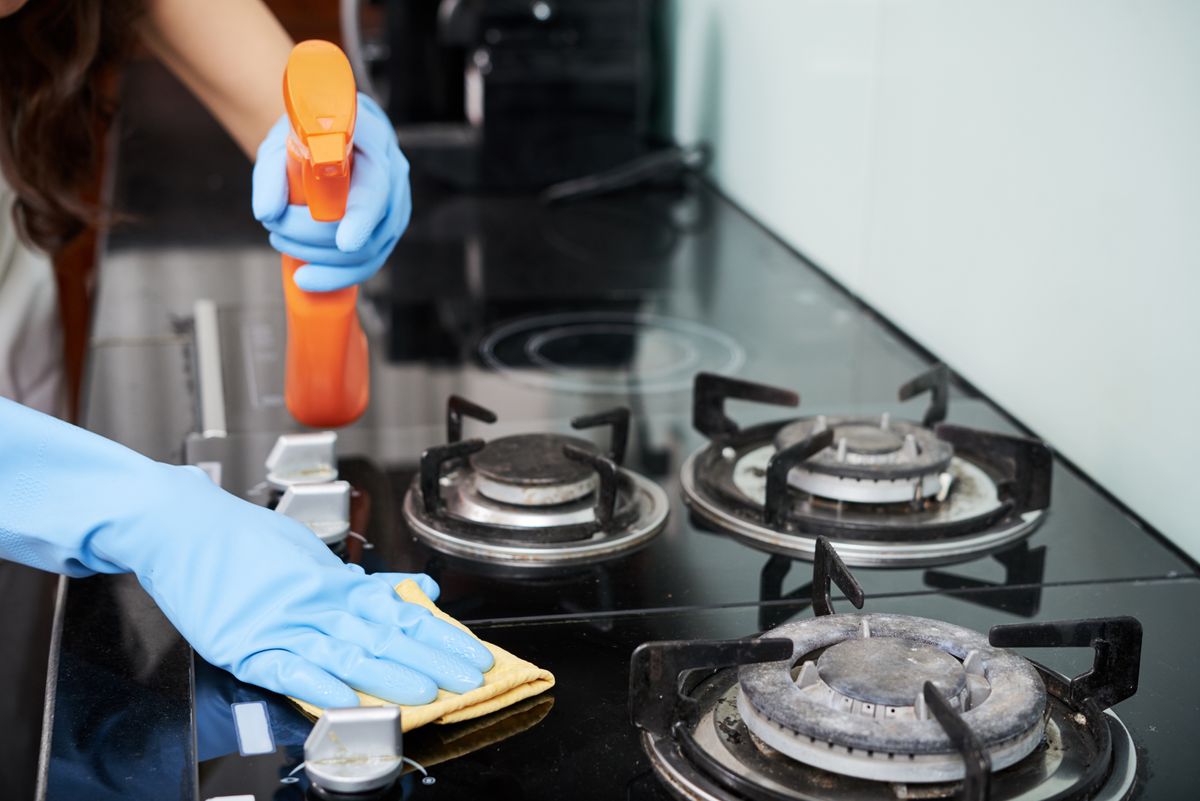The Centers for Disease Control and Prevention has put together an extensive list of tips to help you clean and disinfect your home.
One piece of advice that sticks out in all of the categories is to wear disposable gloves when cleaning or disinfecting.
CLEAN
Clean surfaces often by using hot, soapy water. Practice “routine cleaning” of frequently-touched surfaces, like tables, doorknobs, light switches, countertops, handles, desks, phones, keyboards, toilets, faucets, sinks, etc.
DISINFECT
Clean the area or item with soap and water or another detergent if it is dirty. Then, use a household disinfectant.
Follow the instructions on the label to ensure safe and effective use of the product. Many products recommend keeping surface wet for a period of time (see product label). A lot of products also recommend precautions such as wearing gloves and making sure you have good ventilation during use of the product.
Diluted household bleach solutions may also be used if appropriate for the surface. Remember to check the label to see if your bleach is intended for disinfection, and to ensure the product is not past its expiration date. Some bleaches, such as those designed for safe use on colored clothing or for whitening may not be suitable for disinfection.
Unexpired household bleach will be effective against coronaviruses when properly diluted.
Remember to follow the manufacturer’s instructions for application and proper ventilation. Never mix household bleach with ammonia or any other cleanser. You should leave solution on the surface for at least 1 minute.
Alcohol solutions with at least 70% alcohol may also be used.
SOFT SURFACES
For soft surfaces such as carpeted floor, rugs, and drapes, clean the surface using soap and water or with cleaners appropriate for use on these surfaces.
If possible, it’s a good idea to launder items according to the manufacturer’s instructions. Use the warmest appropriate water setting and dry items completely.
You can also disinfect with an EPA-registered household disinfectant. These disinfectants meet EPA’s criteria for use against COVID-19.
ELECTRONICS
For electronics, such as tablets, touch screens, keyboards, and remote controls, experts suggest you consider putting a wipeable cover on electronics.
Make sure you follow the manufacturer’s instruction for cleaning and disinfecting. If no guidance, use alcohol-based wipes or sprays containing at least 70% alcohol. Dry surface thoroughly.
LAUNDRY
For clothing, towels, linens and other items, launder these and other items according to the manufacturer’s instructions. Use the warmest appropriate water setting and dry items completely.
Wear disposable gloves when handling dirty laundry from a person who is sick. Dirty laundry from a person who is sick can be washed with other people’s items.
Do not shake dirty laundry. Clean and disinfect clothes hampers according to guidance above for surfaces. Remember to remove gloves, and wash your hands right away.
CLEAN HANDS OFTEN
Wash your hands often with soap and water for 20 seconds. Always wash immediately after removing gloves and after contact with a person who is sick.
If soap and water are not readily available and hands are not visibly dirty, use a hand sanitizer that contains at least 60% alcohol. However, if hands are visibly dirty, always wash hands with soap and water.
Additional key times to clean hands include:
- After blowing one’s nose, coughing, or sneezing
- After using the restroom
- Before eating or preparing food
- After contact with animals or pets
- Before and after providing routine care for another person who needs assistance (e.g. a child)
BEDROOM & BATHROOM
If possible, experts suggest you keep separate bedroom and bathroom for a person who is sick. The person who is sick should stay separated from other people in the home (as much as possible).
If you have a separate bedroom and bathroom, only clean the area around the person who is sick when needed, such as when the area is soiled. This will help limit your contact with the person who is sick.
If you have a shared bathroom, the person who is sick should clean and disinfect after each use. If this is not possible, the caregiver should wait as long as possible before cleaning and disinfecting.
FOOD
Stay separated. The person who is sick should eat (or be fed) in their room if possible.
Wash dishes and utensils using gloves and hot water. Handle any used dishes, cups/glasses, or silverware with gloves. Wash them with soap and hot water or in a dishwasher. Clean hands after taking off gloves or handling used items.
TRASH
If possible, dedicate a lined trash can for the person who is sick. Use gloves when removing garbage bags, and handling and disposing of trash. Wash hands afterwards.
CLICK HERE for more information from The CDC.

